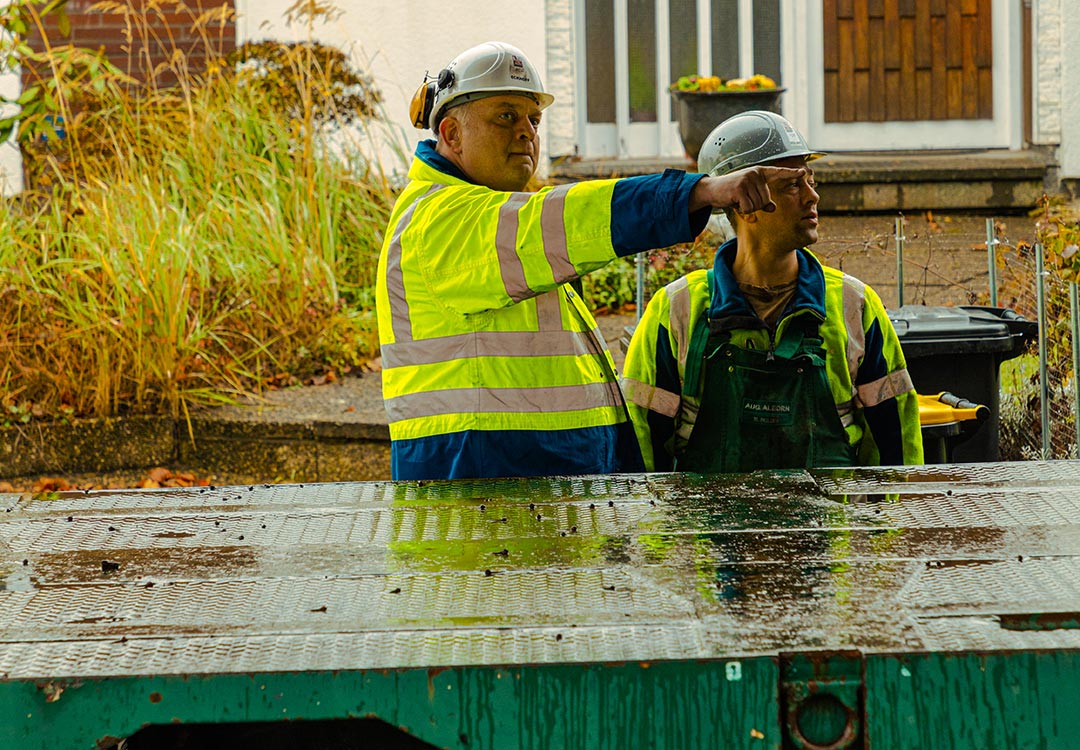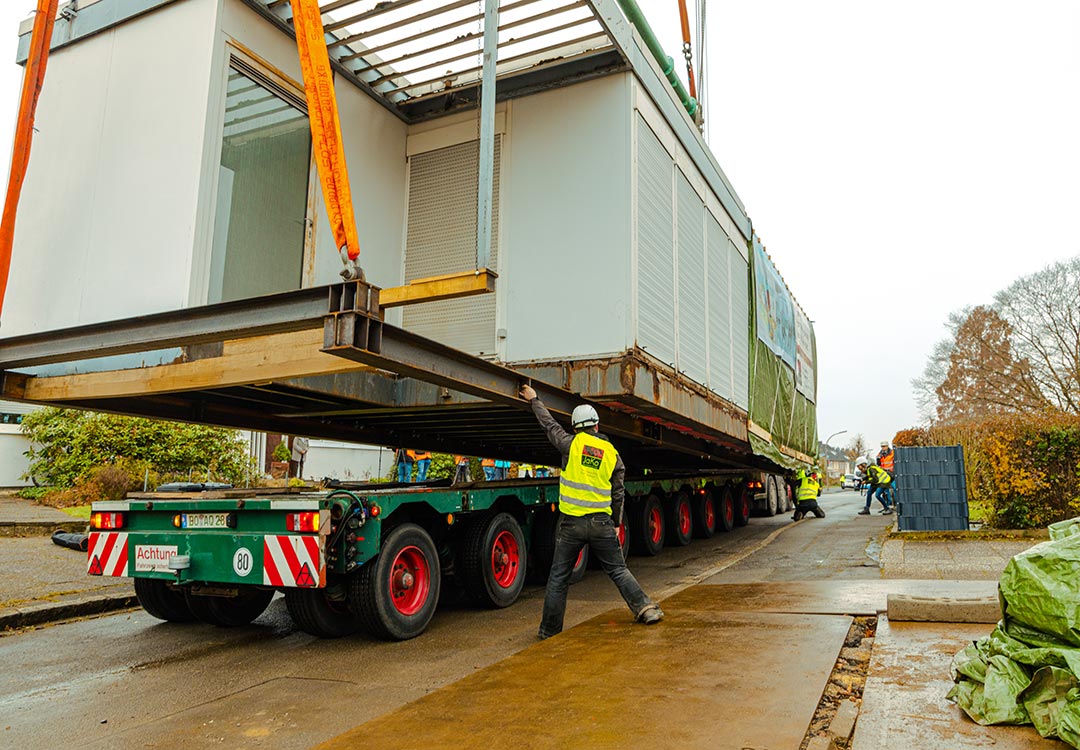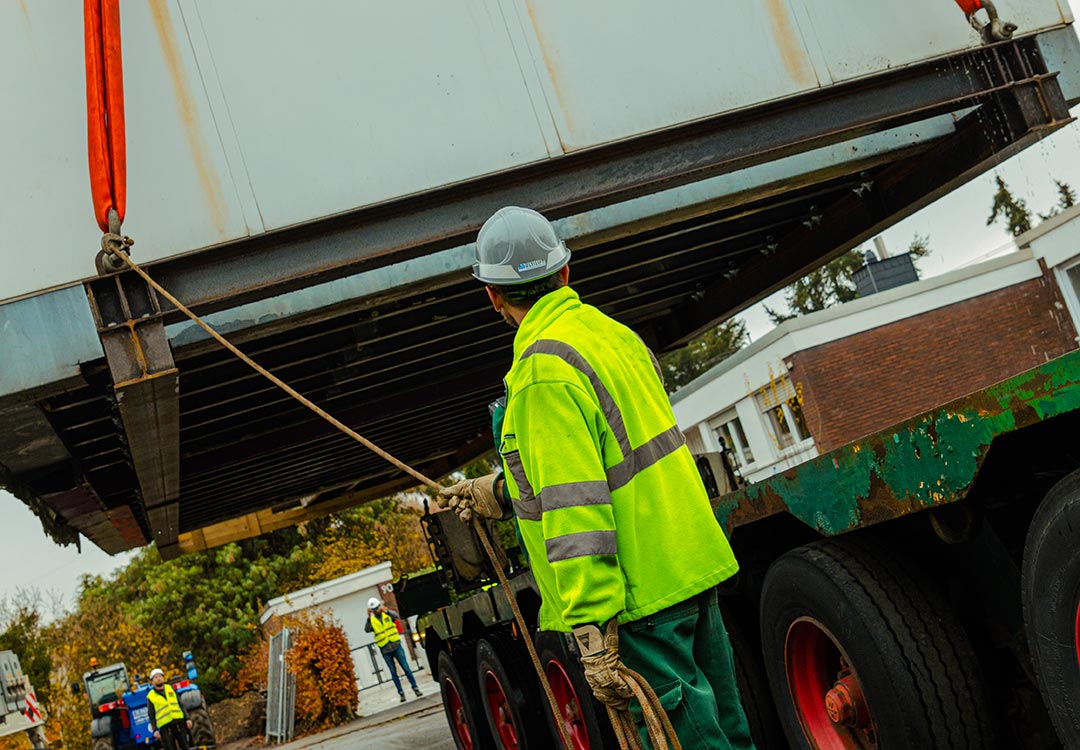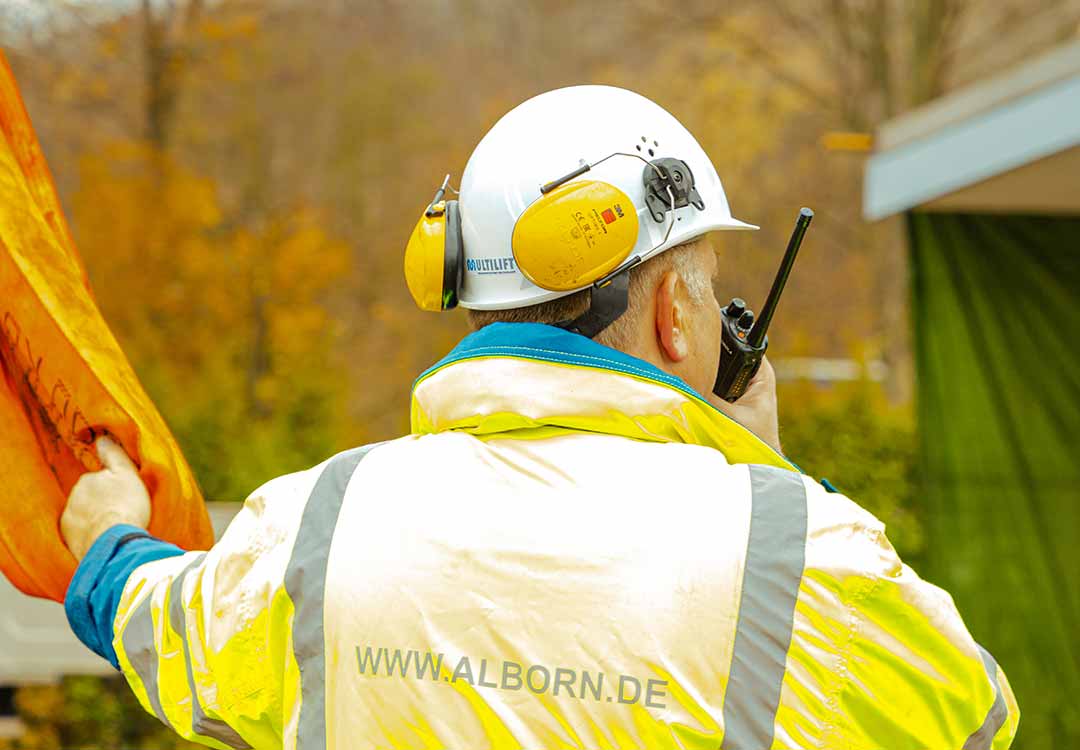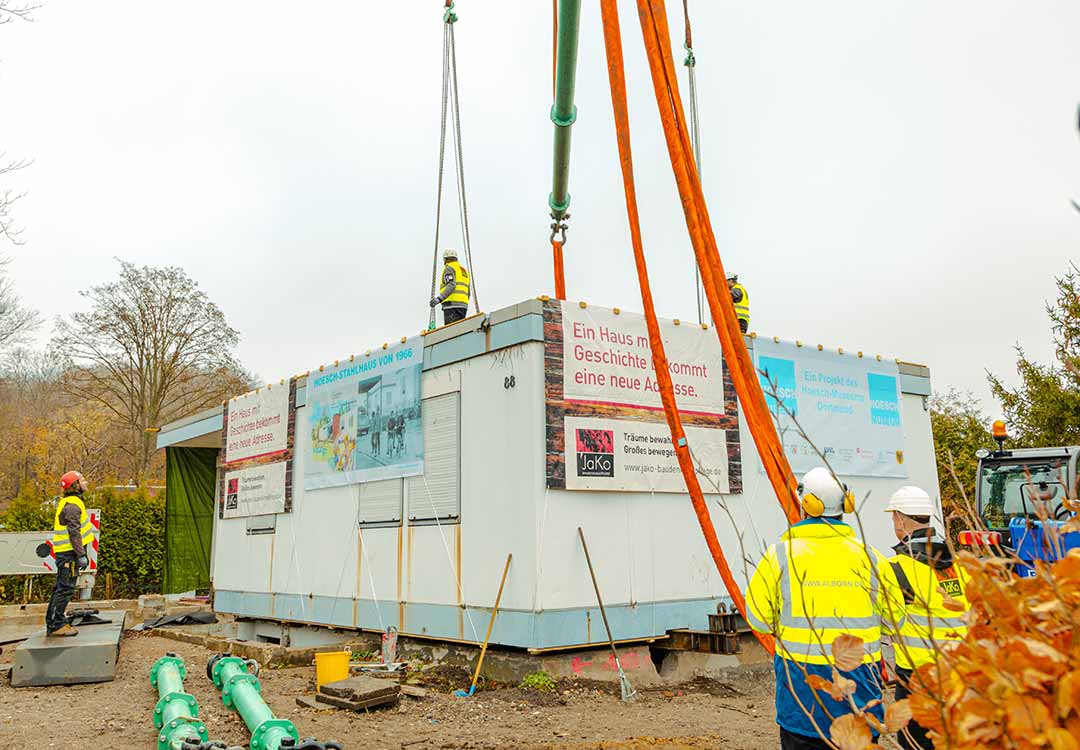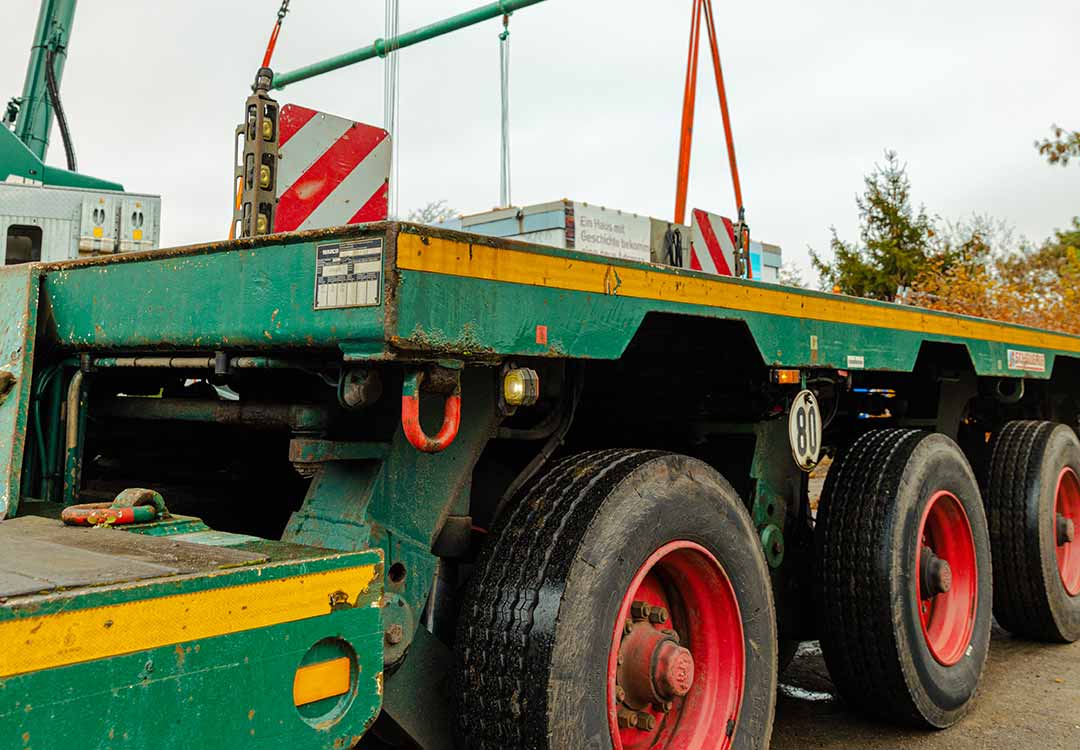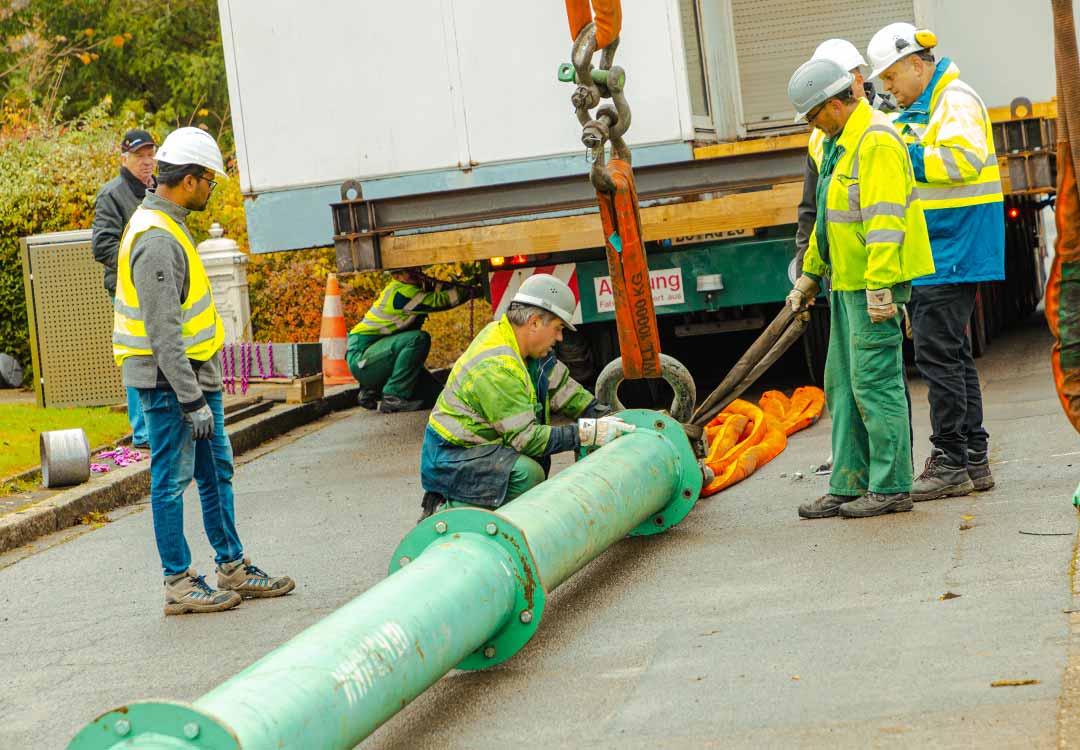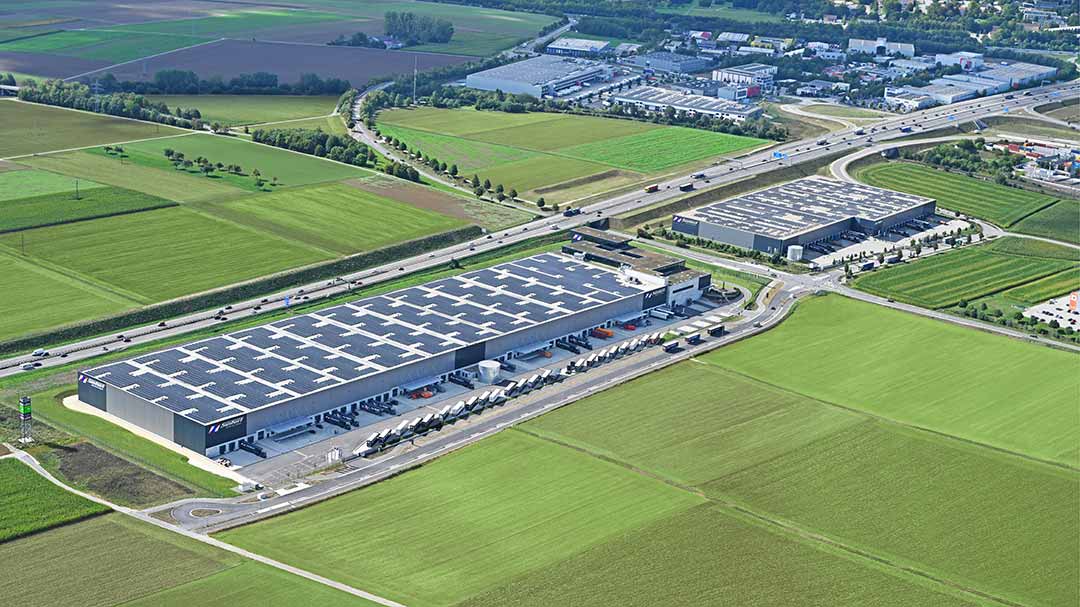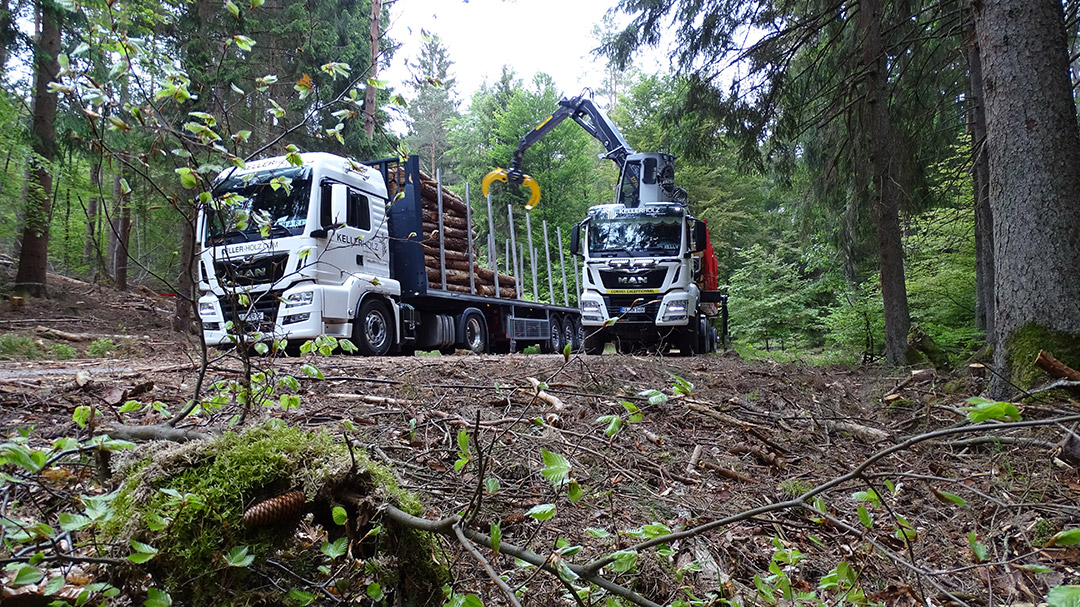Text: Juliane Gringer
Photos: Christian Schürmann
The heavy load professionals from August Alborn GmbH & Co. KG carried out an unusual project in Dortmund: they transported the Hoesch-Haus, a steel construction bungalow from the 1960s, to a new location at Westfalenhütte.
29th November 2022, 11 p.m.: John Eckhoff, the person responsible for technical field service at the heavy haulage company August Alborn, tightening the load. He looks enquiringly at the truck driver: “Is that OK, Jörg?” They have only travelled a few hundred meters, a central traffic island is in the way at the very first bend. Driver Jörg Walenzik gets out, looks at everything carefully, considers the situation – and finally hydraulically lifts the trailer a few centimetres, to get past the obstacle. “OK!” he calls. John Eckhoff smiles. They can carry on.
Two weeks earlier: the Hoesch-Haus was separated into two parts to transport it from its current location in Lütgenholthauser Straße in Dortmund. They are 13 and 16 tons, eight and 12 meters long and in places more than eight meters wide.
29th November 2022, 9.25 a.m since 6 a.m., John Eckhoff and his team have been setting up the 180 ton truck crane, which should safely lift the house parts. The first part was strapped and loaded from 9.30 a.m. This is probably the most critical moment of this project: “We have to attach the crane cable at six points in order to be able to lift the entire house part That’s why we need very long ropes and have to push the cantilever out far.” The further away the crane is, the bigger and stronger it has to be. And despite all of the planning, we will only know at the moment when we lift it whether everything actually works, explains Eckhoff. Luckily, everything went OK: after 50 minutes, part 1 was safely positioned on the vehicle, a good few hours later, the second part was also in place.
29th November 2022, 10 p.m.: It was not until the late evening that the actual transportation began. The roads up to the delivery location were blocked, a building site was cleared, street lighting was disassembled and the police escort secured the whole area. John Eckhoff is tense, as ever, when it finally gets going: “This tension is good. It is important, because it means we stay concentrated.”
The first stage of the roughly 12 kilometre long route to the new location of the house took them through the residential area in which the bungalow previously stood. The route led from Lütgenholthauser Straße, via ‘Am Hombruchsfeld’ to Zillestraße. Onlookers lined the streets, staring in astonishment at the two house parts being transported. Around 200 no parking signs had previously been set up along the entire route. “Most of these people are standing here in the first section,” explains Eckhoff. “We measured everything precisely in advance and we were only able to traverse the residential areas in which we could use the entire footpath as well. The excess width floated above the footpath on each side.” The Alborn team then encountered two cars parked on the side of the road. But luckily, they were able to quickly find the drivers to move their vehicles.
Barbara Woerner was also present: she grew up in the Hoesch-Haus and lived in it until she finished school. Bungalow L141, a prefabricated house belonging to the steel company Hoesch AG, with a floor space of 141 square metres, has stood in the residential estate for 56 years. Barbara Woerner’s father was an engineer at Hoesch and helped to develop it. He lived in the well-maintained steel construction himself until his death around ten years ago. Many details made the special house stand out: for example, the walls are washable and pictures can be hung on them with magnets instead of nails. Acquaintances often ridiculed the house as a ‘steel box’, Barbara Woerner revealed. But she is not the only one who has fond memories of it; the house also has considerable historical value. That’s why the family gifted the perfectly preserved piece to the ‘Freunde des Hoesch-Museums e. V.‘ foundation, which intends to make it open to the public. The house will be ready for visitors at its new location from the end of 2023, including characteristic 1960s furnishings.
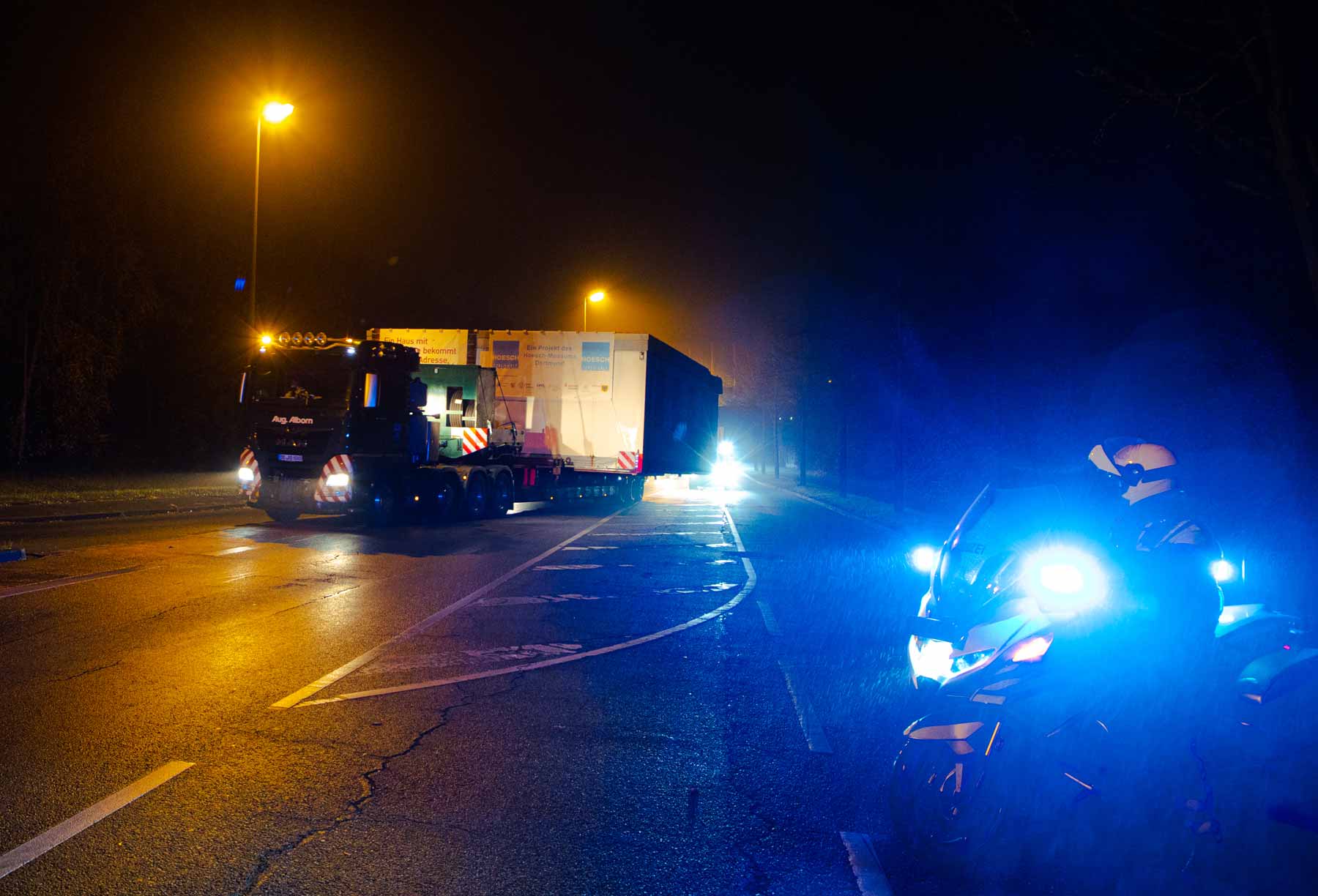
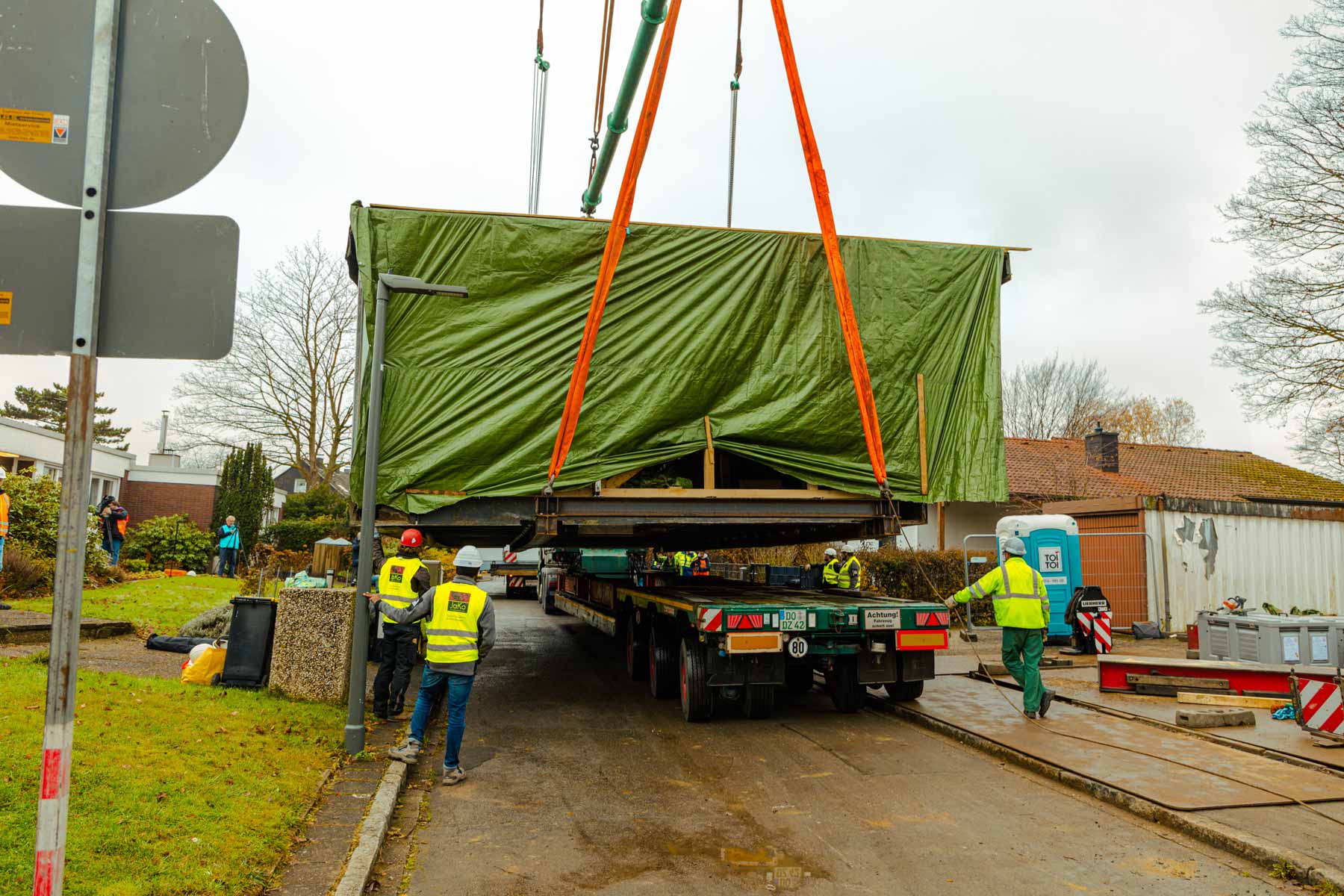
The Alborn company has been carrying out heavy transports for around 130 years and is a one-stop lifting, transport and assembly service. The team is able to cover an extremely large area in Special transport with these services. “We love to plan projects with our customers,” says Eckhoff. “We provide comprehensive advice about how a project can be most effectively accomplished. The transport of historical buildings such as this one is always associated with particular challenges,” explains John Eckhoff. “If a part of it gets damaged, the affected parts cannot generally be repaired – or the original condition is simply lost. This is why it is particularly important for us that we don’t have any knocks and that no other damage occurs.”
30th November 2022, 12 a.m.: Things are progressing a little faster outside of the residential area. However, from experience, John Eckhoff generally keeps the speed at 25 mph. “This seems very slow in a car, but if the vehicle is almost eight metres wide, it’s a different story,” says Eckhoff. “At that speed, you can react more quickly to obstacles or things that crop up suddenly.” Nothing unexpected happens on the way north of Dortmund, the transport rolls on effortlessly towards the B236. The sign posts have already been dismantled at the exit to the main road, so as to create plenty of space. The transportation project is also safely able to pass the roughly 1.4 km long ‘Wambel’ tunnel on the motorway, everything is going as planned.
The excellent project preparation helped here: the team created drawings over the course of several months, measured and calculated heights and widths and selected the suitable vehicles and lifting equipment – in the office and in the course of numerous on-site visits. Digital tools were able to help, but a special task such as this one requires mental effort and manual skills in particular. “If everything has been clarified, the last thing we do is apply for the heavy load transportation permit, so we are allowed to travel in public traffic with our vehicles,” explains John Eckhoff.
The Hoesch-Haus is moved with two Scheuerle Low loader trailer . The hydraulically controlled BPW Axles are an important component for the success of this transport, according to John Eckhoff: “BPW axles have a high load index with a low dead weight and a compact design – and that is decisive for us. Plus the superb quality protects against failure, we can work more reliably. As we generally drive at night, we can’t afford any breakdowns or idle time.” After three hours driving, the convoy finally reaches the Rüschebrinkstraße at gate 4 of Westfalenhütte. The most important bit is done!
330th November, 1 p.m.: After the team had slept for a few hours, the last few metres to the final location are completed in daylight. The new foundations opposite the Hoesch museum are ready. Now things get really exiting again: the crane lifts the house parts from the low loader trailer one after the other – and they glide seemingly weightlessly across to their new location. They are precisely positioned at the site, centimetre by centimetre. Everything goes smoothly: finally the Hoesch-Haus is complete again – undamaged and ready for a new chapter in its life.
The transportation was also a unique experience for John Eckhoff. Even though he has already been in the job for 30 years: “In special transport we are constantly faced with new tasks – and we have to find a feasible and safe solution for each of these tasks. That keeps things exciting.” When the second part is finally positioned, the relief is palpable in everyone. A high-five with the team accompanied by relaxed smiles and visible happiness among those involved show how much dedication has gone into the transport.
The Hoesch bungalow
The Hoesch mining company constructed a residential estate in Dortmund-Hombruch from 1962 with prefabricated houses made from ‘Platal’ – lightweight profiles made from PVC coated steel sheeting. Visionary for the time: the bungalows had a modular assembly system and modern air conditioning consisting of innovative materials and the architecture was unique. However, success remained elusive. Only around 200 of the metal objects were built and production was stopped again as soon as 1969. Among other things, the price was probably too high: at the time it was built in 1966, the house which was transported cost around 123,000 D-Marks.
The Hoesch museum
The Hoesch museum was set up on the premises of Westfalenhütte in Dortmund, as a reminder of the significance of the steel industry for the Ruhr region. At the heart of it is the history of Hoesch AG. The museum displays exhibitions from 160 years of steel history. Visitors can experience the atmosphere of this type of factory in ‘3D steelworks’ wearing 3D glasses, with its imposing backdrop of light and noise.



